This 29-year-old quit her corporate job to become Singapore's only dedicated glass neon artist
Megan Foo spent about a week in the mountains in Taiwan to learn the craft from a master.
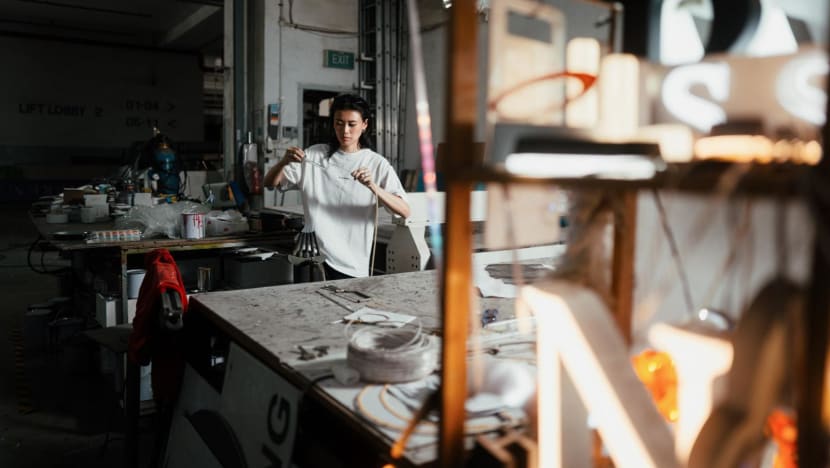
Ms Megan Foo had always loved art and after six years in a corporate job, she decided to quit to become a full-time neon artist. (Photo: Kang James)

This audio is generated by an AI tool.
SINGAPORE: Megan Foo has always loved art, to the point of taking it up as one of her A-Level subjects.
But in university, she decided to study business instead, seeing it as a more practical option that would open doors to a stable income. After graduation, she landed a marketing job.
Yet her true passion never went away. A few years into her corporate career, she began looking for courses in Singapore to learn more about neon art, having been drawn to neon signs while on earlier trips to the United States.
Glass neon art, in particular, involves using neon gas and electricity to create glowing tubes of light in a range of colours. By heating and softening the material, it can then be bent and shaped into letters or sculptures.
The artform has been around since the early 1900s, but it was in the 1920s and 1930s that such signs became popular, particularly in the US.
After failing to find any avenues in Singapore, Ms Foo came across a three-day course in Australia and signed up.
A spark was lit and after the course, she continued searching for anything else related to neon that she could try - such as glass blowing, which was popping up on her social media feeds.
She returned to Australia for a one-day workshop on how to inflate glass by, as the name suggests, blowing air into it.
But Ms Foo quickly realised the "very, very hot" temperatures involved were not as manageable for her as those for glass neon art.
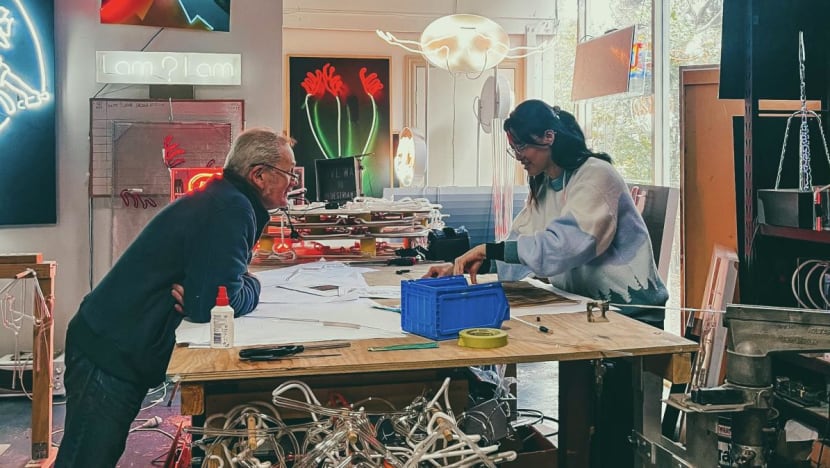
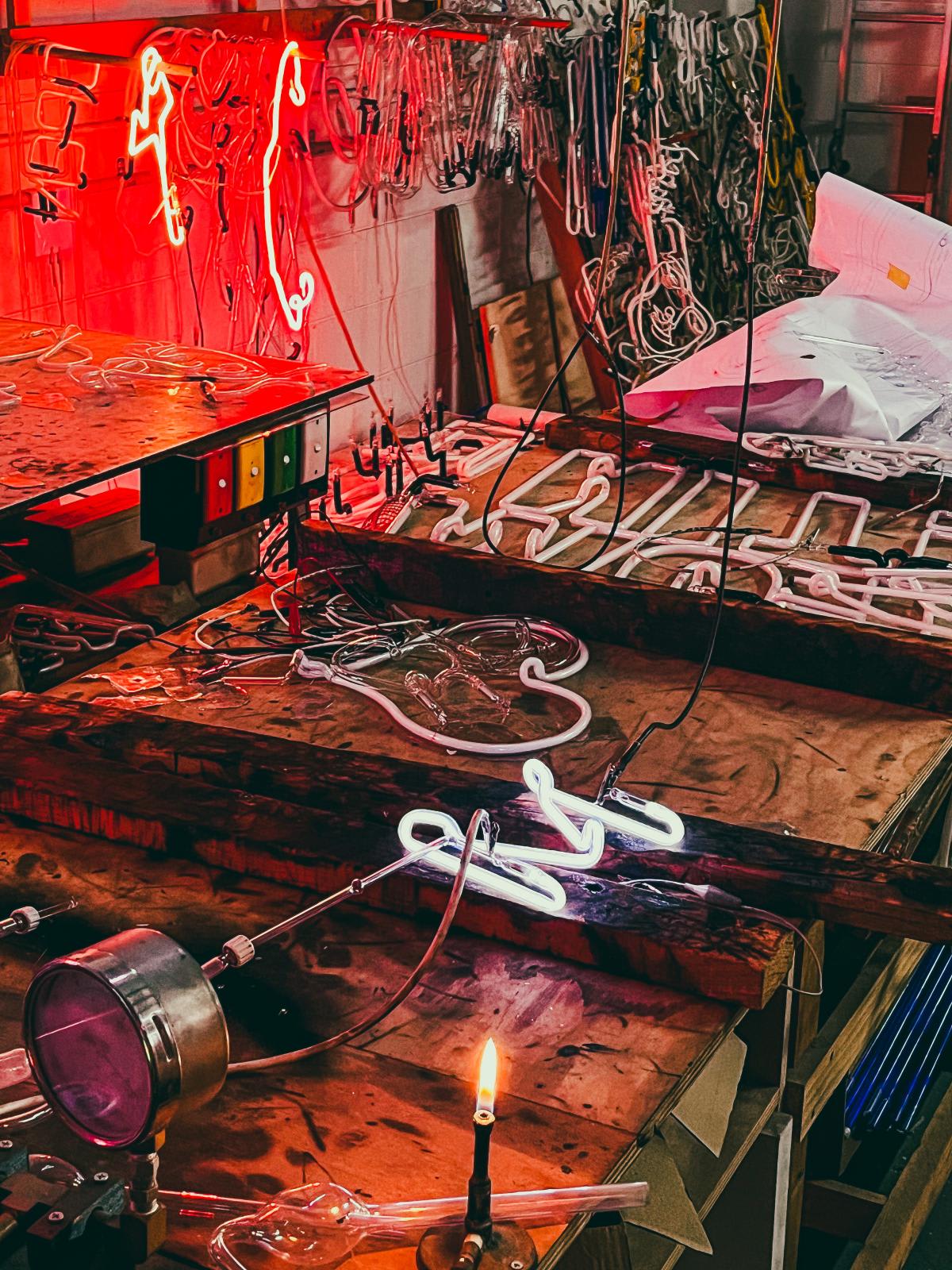
She next tried looking for someone to learn the ropes from locally, but again had no luck.
Then she found out about Taiwan-based neon artist Huang Shun-le, whom media reports described as among former neon light signboard makers attempting to revitalise the industry by making art.
Ms Foo was initially concerned that Mr Huang was not based in the capital Taipei but somewhere in the mountains near Hsinchu city.
"As Singaporeans, we are very sheltered, very scared of the unknown. (So I thought) 'should I take leave to go to this random person's house in the middle of the mountains?'" she said.
Mr Huang's course was also run entirely in Mandarin. While Ms Foo rated her grasp of her mother tongue as "pretty okay", she remained unsure if she could effectively communicate with her teacher.
Still, she'd heard enough from other neon artists previously taught by him, to convince her to reach out in 2023.
She eventually found time in early 2024 to travel to Mr Huang's place, where she spent about a week intensively focussed on glass bending.
"He didn't let me light up anything. I just bent glass over and over again," Ms Foo recalled.
Her teacher said if she could do this initial step with confidence, she would be able to move on to subsequent levels the next time she came over.


JOURNEY TO BECOMING A FULL-TIME ARTIST
Following her Taiwan trip, and after six years in her corporate role, the 29-year-old decided to call it quits last May.
"I thought I've done everything I want to do in that role. It was a good time for me to change what I want to do," said Ms Foo, adding that she wanted to do something that inspired her.
Since then, she has settled into the life of a full-time artist, who also does content creation on social media on the side.
Ms Foo also made another trip to Taiwan where, true to Mr Huang's word, she spent every day creating different neon art pieces.
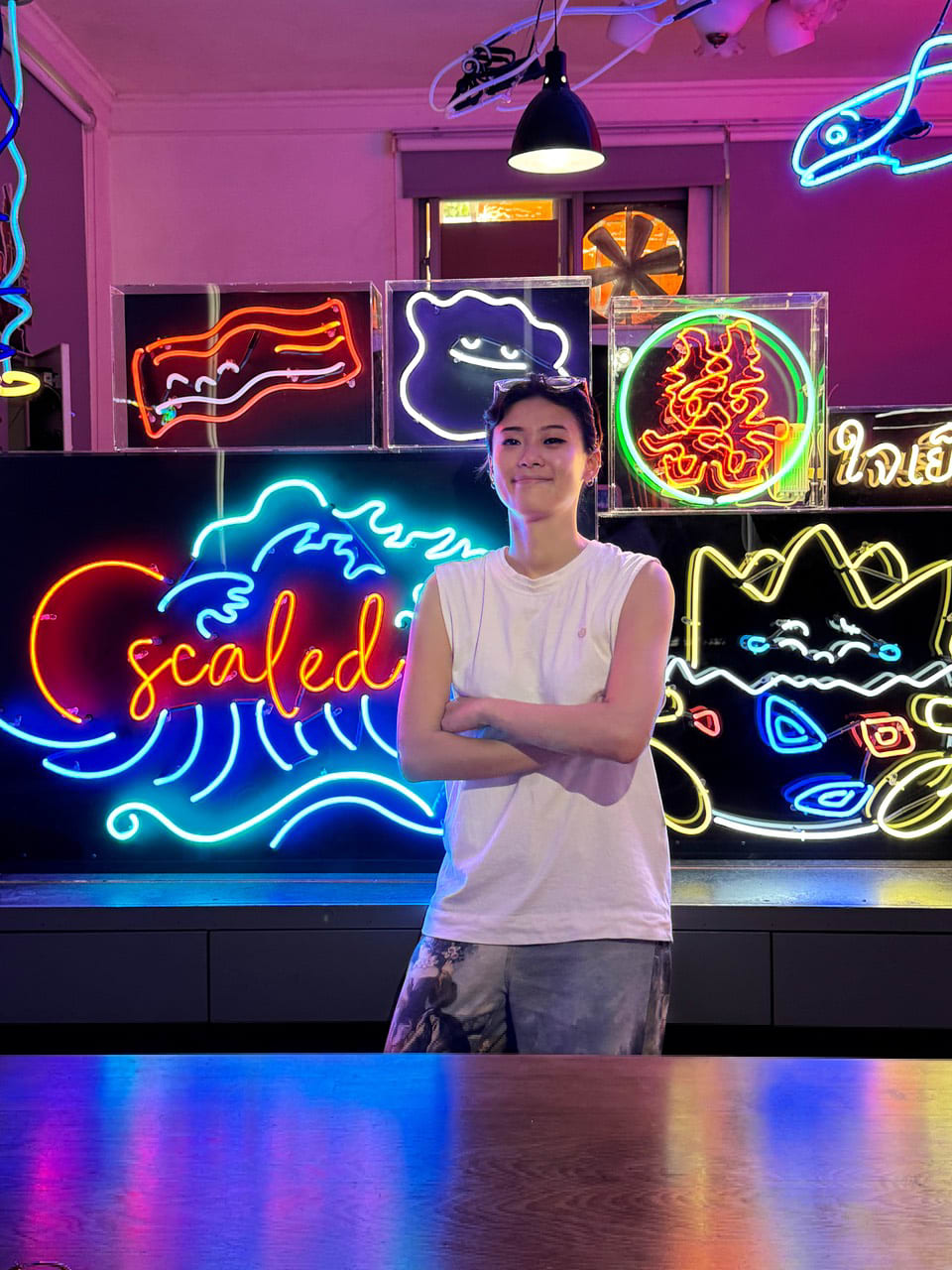
Back in Singapore, it hasn't been easy to hone her skill, with the necessary equipment for neon art both highly specific as well as expensive.
Ms Foo has been renting a space in an industrial warehouse to practise her craft.
She's also produced several art pieces, including one for Thai pop duo Serious Bacon.
Ms Foo noted that neon art's time-consuming nature might also discourage people from taking it up.
In fact, Nanyang Academy of Fine Arts' (NAFA) global engagement lead Michael Lee told CNA he was "not aware" of anyone else in Singapore who identifies as a glass neon artist.
One reason could be that contemporary artists often prefer not to limit themselves to a single medium, said Mr Lee, a curator and artist himself.
Additionally, glass neon is fragile, costly and energy-intensive compared to its LED counterpart.
Many signage vendors in Singapore have also relocated their glass neon workshops to Malaysia, making it less accessible, said Mr Lee.
The National Arts Council (NAC) told CNA it encourages the exploration and presentation of art in different mediums, including in "niche areas" such as neon.
A spokesperson added that the statutory board is seeing a growing community of passionate individuals and organisations across various art forms, collectively contributing to Singapore’s vibrant and maturing arts scene.
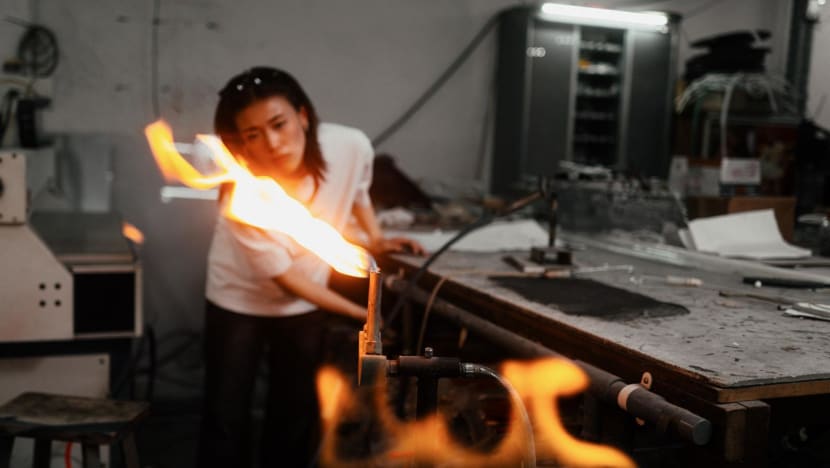
NOT JUST NEON SIGNS
To Ms Foo, neon is "not just about signage".
NAFA's Mr Lee pointed out that neon signage and neon art differ in purpose, form and significance.
Signs are designed for commercial or entertainment use, and prioritise clarity and legibility to drive sales.
"In contrast, neon art is open-ended, exploring abstract ideas and provoking thought, often taking on experimental shapes and forms," said Mr Lee, who has created glass neon art as well.
Even if this facet of neon remains obscure and not easily accessible to most people, it has a "niche, cult following" similar to that of vinyl records, he added.
"Just as vinyl enthusiasts value its warm, imperfect sound despite digital platforms like Spotify, neon art continues to attract those who appreciate its craftsmanship, heritage and tactile quality."
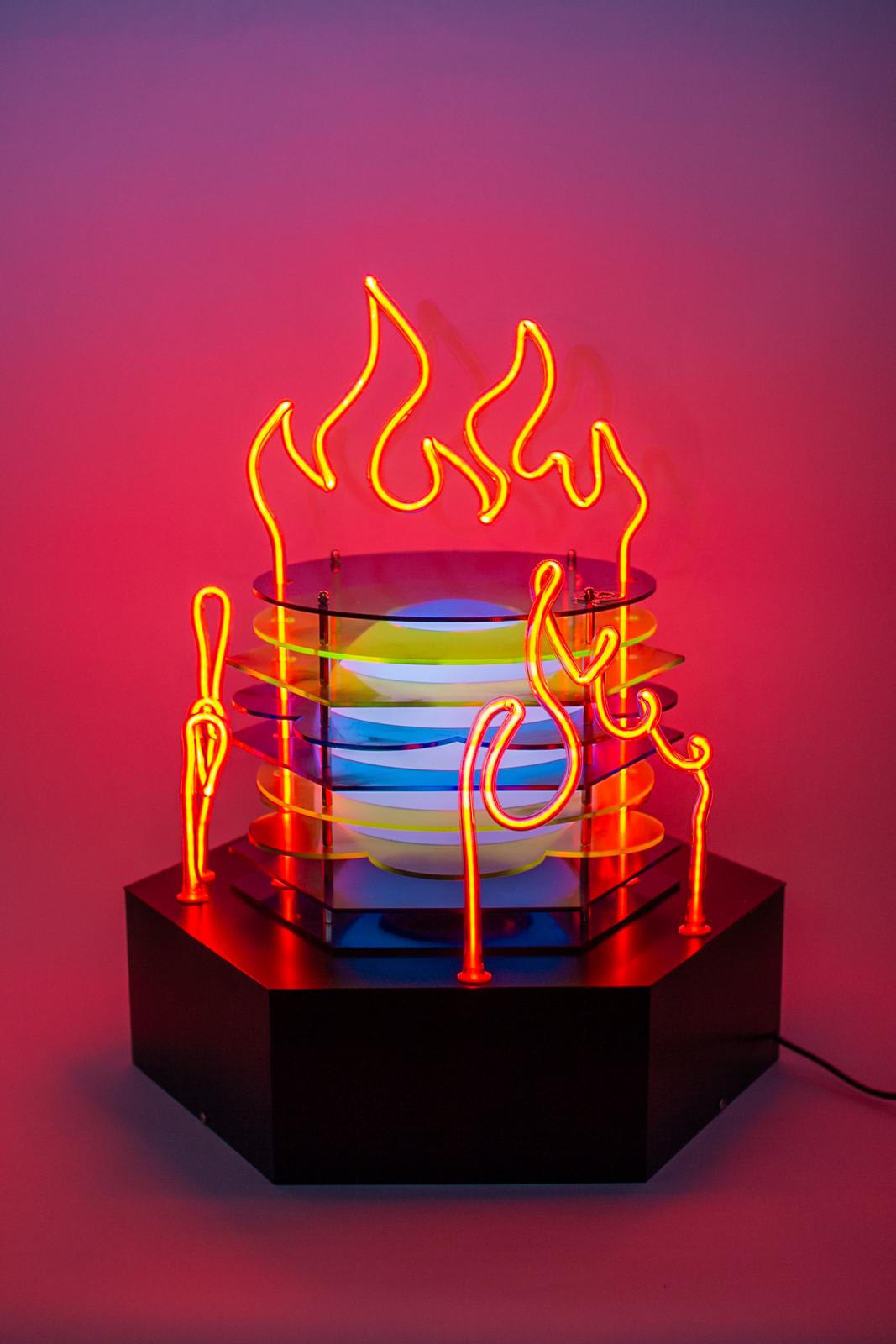
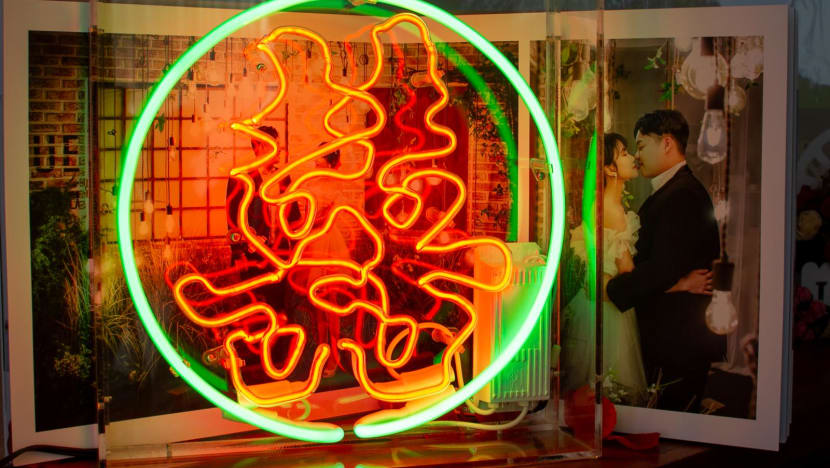
Moreover, young artists like Ms Foo are vital to preserving and expanding the tradition, said Mr Lee.
"Her global, cross-cultural experiences and social media savvy give her a strong edge in keeping neon relevant."
In terms of making a living, it can be difficult to do commission work as some materials are hard to come by, said Ms Foo.
Yet she's also resolute about being an artist rather than what she called a "maker" getting by on commissions.
"As a neon maker, there is nothing that's me in it," said Ms Foo.
"I want it to have an element that is mine, a style or flair that is mine, that I can add to the work."















